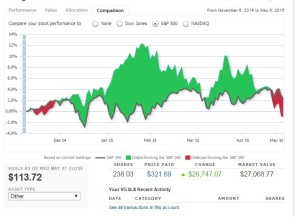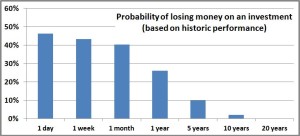
I’m trying to build my audience, so if you like this post, please share it on social media using the buttons right above.
Most people want to increase their net worth. The problem is that it’s not always easy. Here is a look at the five “easiest ways” to increase your net worth, either by spending less, making more, or increasing your investments.
5. Insurance: By definition, buying insurance is a money-losing proposition. Insurance companies make money by relieving us of the financial risk of our lives. And that’s fair.
The problem is so often we make decisions on insurance at one stage of our lives and then “set it and forget it”. After a few years, what was appropriate then might not be appropriate now.
A several years back Foxy and I got life insurance. Based on our net worth and overall situation, it made sense. Since then, our net worth has increased many fold, and if the EXTREMELY UNLIKELY event of our death happened, the survivors would be fine. Is that worth $100 each month?
We picked the appropriate coverage on our car insurance four years ago. Now our cars are four years older and worth substantially less. Do we still need those levels of coverage today? If the answer is “no” we could probably save another $30 per month.
4. Revisit monthly expenses: It’s easy to put your finances on auto-pilot as you make it through this crazy journey called life. Yet, as fast as things are changing, especially technologically, it’s easy to have prices creep to too-high levels when you take your eye off the ball.
Our family has two cell phones (we refuse to cave in to getting our 10-year old a phone) and that costs about $60 per month. Our internet is $35 per month.
Yet, I can’t tell you how often I talk to families about their finances and expenses and when those items come up they’re paying two-, three-, four-times as much. That’s not to say you should go without, but there are a lot of expenses where there are great alternatives at deep discounts from what you’re paying right now.
3. Ask for a discount: It’s amazing what we can get if we just ask. I was working with a couple who had a pretty normal financial picture with pretty normal debts—car loans, mortgage on a second home, loan for a boat, student loans.
On a lark I suggested they call the various companies that held the loans and just ask if it was possible to get a lower rate. Wouldn’t you know, they were told “yes” more often than “no”. Sure, some places said no, but that happens. The ones who said yes were able to offer better terms for the loans that amounted to hundreds of dollars in lower payments each month. Who knew?
2. Balance transfer on credit cards: Obviously having credit card debt is a bad thing and should be avoided at all costs. If you do have credit card debt, eliminating that should be your top financial priority.
However, in the here and now, if you do have credit card debt that you’re working on paying off, getting a new credit card and transferring your balance could result in hundreds of dollars in savings on interest.
Many cards offer 0% introductory rates for purchases or balance transfers. Taking advantage of this could be a huge boost. $10,000 of credit card debt at 20% rate is $170 for interest alone each month. If you could take 20 minutes to apply for a new card with a teaser rate, that could save you a ton of money.
Of course, you still need to pay the debt off. But doing so with an introductory rate can really help speed things along and save you a ton in the process.
1. Refinance your mortgage: Mortgages are often the largest expense that families have, yet it’s one of the easiest to impact. Right now, mortgage rates are at historic lows.
The Fox family just refinanced ours at 2.6%. Many people could probably also get a lower rate, especially if you have a conforming mortgage (we don’t) or can swing a 15-year mortgage (we did 30). Us going from 3.5% to 2.6% will save us about $500 per month for the next 30 years. That adds up to some serious money.
Awesomely, the effort required to do this isn’t very much at all, especially compared to the upside. With about 2-hours of internet searching, filling out forms, and talking to a few people, you can figure out if you can save money with a refinance. If you can, then it’s probably 10 more hours of getting all the forms together and signing a bunch of stuff. A dozen hours of work for an annuity worth hundreds of dollars a month is about as good as it gets.
Obviously there are the “meat-and-potatoes” way of increasing your savings. Spend less. But that requires a trade-off and sacrifice. Here are some examples where hopefully that trade-off is the most painless.











